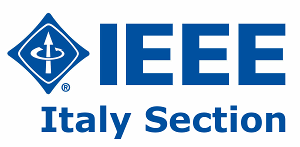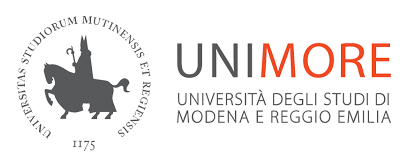Smart healthcare: Technical sessions
Session 3.1: Services, Applications and Solutions to Challenging Problems in Smart Healthcare
Chairs:
| Keywords | Topics |
|---|---|
|
|
The wide adoption of context-aware technologies within smart cities and the emergence of the IoT paradigm have opened the door for the wide development of a diversity of new applications to monitor activities within smart cities and context-aware environments. Smart cities strongly depend on technology (RFID, mobile phones, sensor networks, etc.) to support their main areas of development, namely Smart Healthcare, smart government, open and big data analytics, smart mobility, and sustainability. In the last decade, advances in wireless sensing technology led to the emergence of a wide range of applications in many domains, namely healthcare, sport, consumer electronics, social networking, and so on. Healthcare, and more specifically e-health, m-health and Smart Health, are recognized as some of the most important and promising amongst these applications due to their potential to positively impact the quality of life of citizens in many ways (e.g. wireless and remote monitoring of chronic illnesses, managing lifesaving emergencies, providing round-the-clock healthcare in disadvantaged areas, etc.). In addition to the contextual information provided by smart cities, a key point for smart healthcare is the monitoring of health-related signals such as vital signs, which is mainly supported by Body Sensor Networks (BSNs) technology, and it is expected to revolutionize the healthcare and real-time body monitoring industries. Overall, putting BSNs, RFID and other context-awareness enabling technologies at the disposal of smart cities allows for relevant advances in e-health to ultimately improve the citizens’ quality of life. However, without ensuring the required efficiency, dependability, scalability, security and privacy level for the citizens, and without developing the proper tools for collecting, processing and mining the sensed data, healthcare in smart cities (i.e. smart health) cannot gain wide acceptance and can hardly become a reality. We invite researchers and practitioners to contribute original research articles that will stimulate continuous efforts to advance the Smart Health research field. |
Session 3.2: Big Data Integration and IoT for Smart Health Care
Chairs:
| Keywords | Topics |
|---|---|
|
|
The healthcare industry is naturally rich with data -- clinical, patient, claim, hospital system, financial, pharmacy and, most recently, data from wearable technology. It’s clear that analyzing this data collectively can drastically improve patient care and both clinical and financial outcomes, but how to actually collect, read, integrate, understand and leverage the data remains a broken process. From a technology perspective, data is sourced from a myriad of systems with varied levels of sophistication, accessibility, transparency and quality. Moreover, the advent of massive accumulation of data (Big Data) and the Internet of Medical Things (IoMT), makes it difficult to reuse existing healthcare data integration tools. The integration of patient’s health data through Big Data integration techniques, provides a complete and synthetic view of all the information about a patient or a set of selected patients; and Big Data analytics allow a widespread monitoring to prevent clinical events and plan personalized care treatments. The Internet of Medical Things (IoMT) is the collection of medical devices and applications that connect to healthcare IT systems through online computer networks. IoMT includes the hardware (sensors and medical equipment), software (Cloud and data integration platforms, apps, web based systems or desktop app) and communication infrastructure (Bluetooth, Wireless, Satellites, Mobile Systems, etc.). IoMT include comprehensive solutions that follow patients on their life places (home, work and public places), enabling home care and telemedicine. |
Session 3.3: E-Health and Personalised Medicine
Chairs:
| Keywords | Topics |
|---|---|
|
|
Health is generally defined as the use of information and communication technologies (ICT) for health. Applications are not only intended in the traditional areas of clinical diagnosis or patient’s follow-up, but also in the monitoring of wellness and lifestyle monitoring in healthy subjects (including infants or elderly individuals). That includes the evaluation and development of mobile applications, through minimally invasive tools (wearable, portable, contactless devices), telemedicine solutions for diagnostics and remote monitoring for patient management and empowerment strategies, and the utilization of big data tools for the descriptive, predictive and prescriptive analytics based on health data. An important role is also played by machine learning approaches for the integration, selection and classification of features as well as by advanced procedures of natural language processing for the information contained in the electronic health records (EHR). Through these instruments and tools it will be possible to detect parameters which could more directly describe the patho-physiological conditions of the analysed subjects in order to fulfill a really “personalized” intervention on them and hence a therapeutic approach more matchable to the single patient’s situation and needs. Precision Medicine, in particular, aims at integrating the information obtained from genomics, proteomics and the other –omics data, with the one obtained at higher scales, i.e. through biosignals and bioimages relative to the various physiological systems studied. The innovative issue would be to be able to treat that individual patient with more targeted interventions, instead of using a protocol which matches more simplistically with a cohort of statistically similar patients. |
Session 3.4: Neural and Cognitive Engineering
Chairs:
| Keywords | Topics |
|---|---|
|
|
Are the cognitive neuroscience ready to be used in advanced industrial contexts? In this Session it will be depicted a possible path for the use of advanced findings in cognitive neuroscience by using biosignals (such as cerebral and cardiac signals). In particular, applications of advanced EEG or EKG signal processing technique will be illustrated in different industrial contexts (marketing, automotive, aeronautic etc etc). Several areas will be described (but not limited to): 1) Brain Computer Interface. How by using the voluntary modulation of EEG activity normal subjects could control external devices such as a cursor on the screen, a mobile robot as well as a wheelchair or the BCI technology could be inserted within the rehabilitation path of the patients suffered of brain strokes. 2) Neuromarketing: Application of neuroscience in the evaluation of relevant marketing stimuli will be described. The main cognitive neuroscience indicators for the appreciation of an audiovisual sensory stimuli (e.g. a TV commercials) is also performed nowadays. The use of such EEG-based indicators in practical situation will be also illustrated. 3) Online detection of mental workload. It could be described as it is possible to detect the brain activity related to the insurgence of mental workload. In fact, it will be speculated that such detection could be employed in a short future to generate devices able to warn the operators about their perceived workload. Example of such detection of mental workload could be presented in three different conditions: on civil airline pilots, on military pilots and on car drivers. |
Session 3.5: Advances in Medical Informatics for Health Care Applications
More detailed informations regarding this session are present on the UNISA RTSI2017 WEB PAGE.Chairs:
| Keywords | Topics |
|---|---|
|
|
Patients’ data are actually obtainable not only from information collected in healthcare settings (i.e., Electronic Medical Records, Radiological Information Systems, molecular laboratory tests), but also from information gathered in outpatient settings. Signals may be collected from wearable or environmental sensors, patient-reported outcomes come from mobile applications, and useful scores (such as quality of life indices) from online questionnaires. Finally, a lot of information is contained in free text documents such as discharge letters, visit reports, etc.. Mostly “omics”, free text documents and continuous patient’s monitoring contribute to dramatically increase the amount of data potentially available for analysis. This impinge on (1) the utilization of big data tools for proper data management, including multiple source integration and data quality control; (2) advanced analytics for their proper interpretation; (3) appropriate visualization tools for delivering the correct messages to the different stakeholders. Technological solutions may be devised at multiple levels. At the individual level, there is the possibility of reconstructing a patient’s history much more accurately than in the past. Case-based reasoning may exploit much more features allowing to allocate the patient within a cluster of similar patients and make more accurate predictions about treatment effect and disease progression. At an organisational level, a correct exploitation of all the available data can lead to new models for healthcare institutions, pushing towards the concept of “learning organizations”. To this purpose, process mining techniques can be used to mine actual organisational processes, compare them with expected ones, and suggest solutions for their improvement. At a knowledge level, formalisms for medical knowledge representation, used for delivering computer-interpretable clinical practice guidelines, could be coupled with tools that automatically discover new knowledge from data, allowing to speed-up the process of guidelines update. The aim of the session is to promote discussion on original solutions to handle these new concepts of the medical informatics. |


